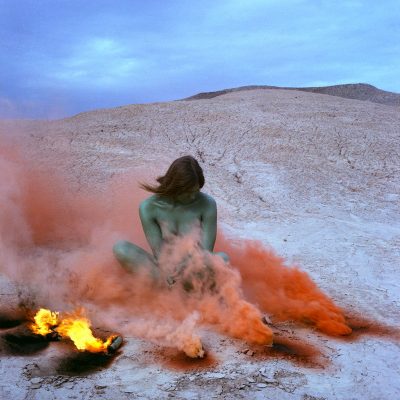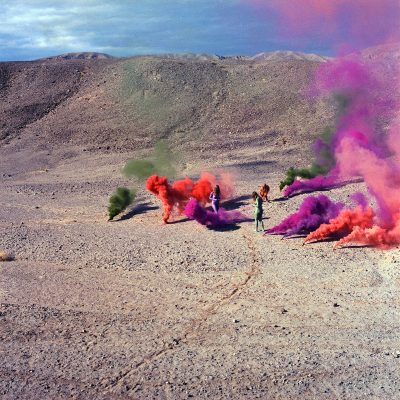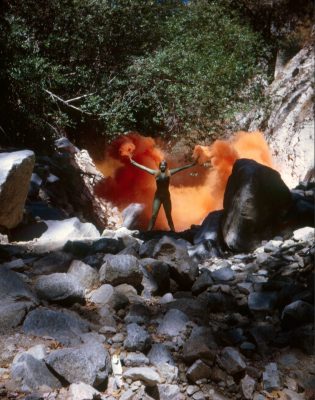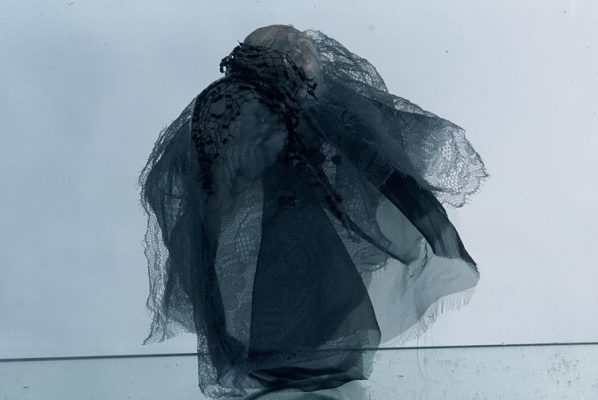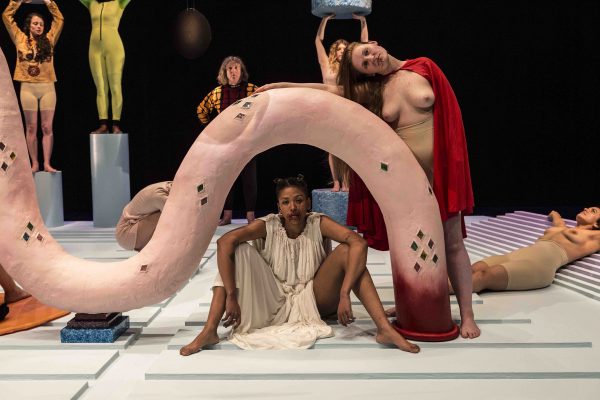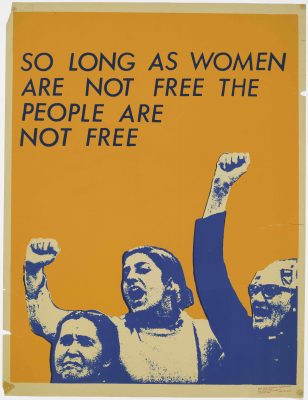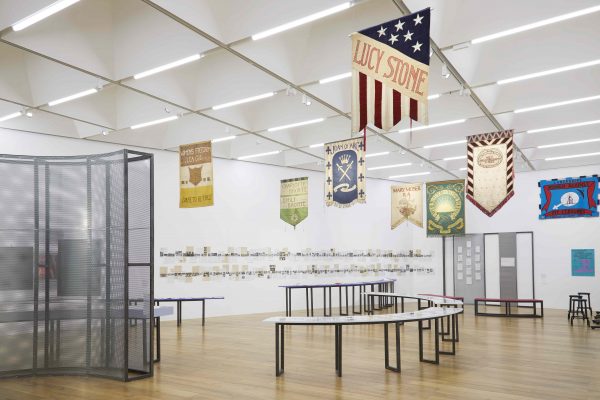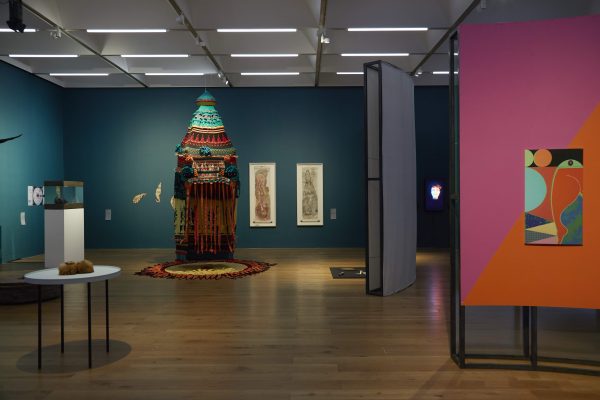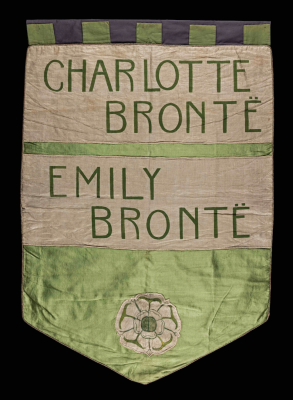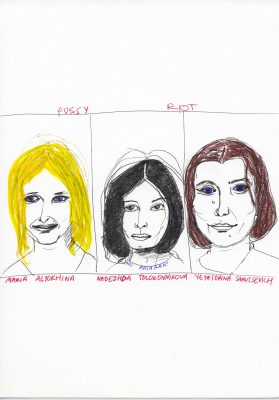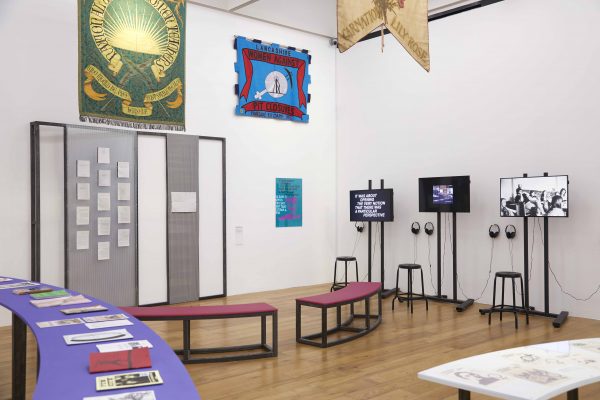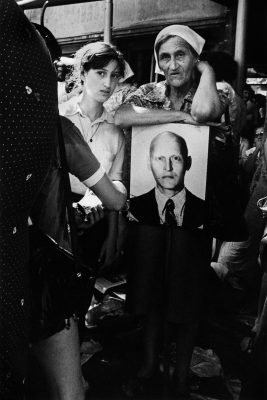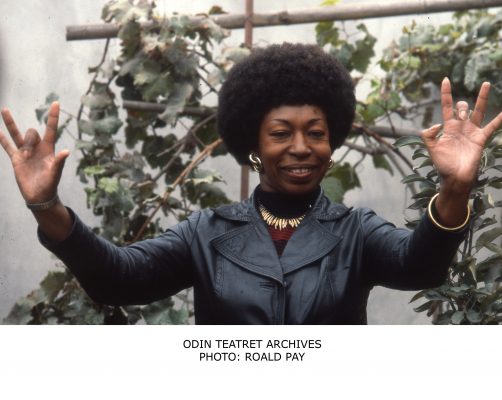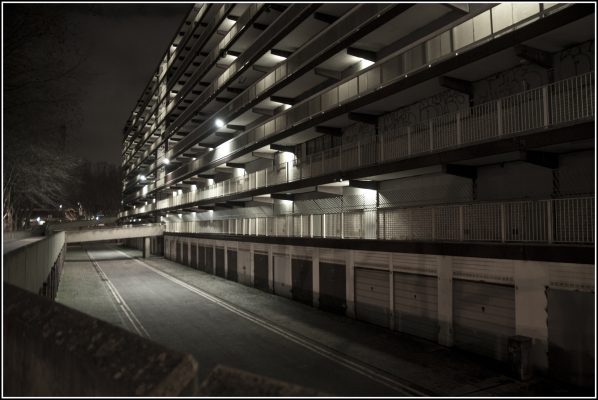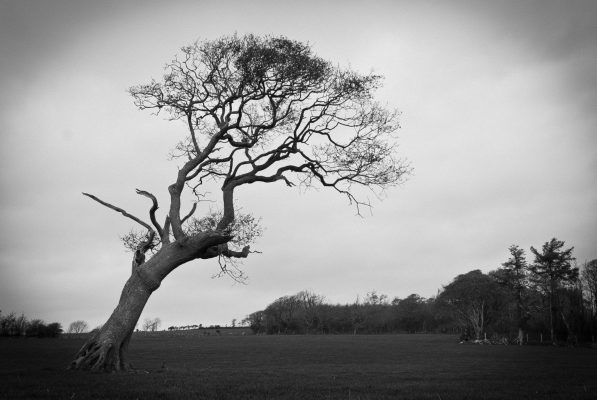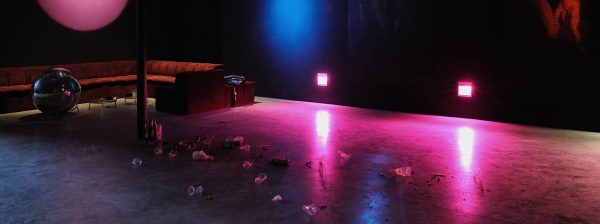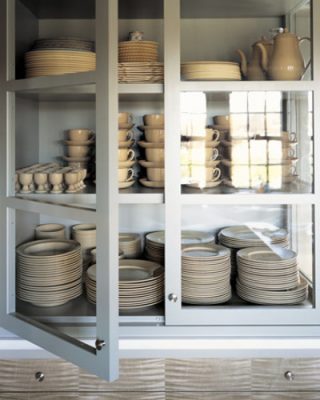When an exhibition promises to do away with a singular narrative in favour of presenting ‘multiple histories’ the result can often be confounding and lacking in cohesion. Still I Rise: Feminisms, Gender, Resistance at Nottingham Contemporary vows to ‘discard linear models of process’ and is indeed a sprawling show presenting the history of feminist resistance from the nineteenth century to the present day, with over 100 exhibits from 50 practitioners. However this exhibition, which is ‘Act One’ of a two-part survey (the second opens at De La Warr Pavilion, East Sussex, in February), manages to deliver an insightful viewing experience. With no fixed route or timeline visitors are encouraged to wander the four thematically arranged galleries with the aid of a mind map which unifies the artists through seemingly disparate terms such as ‘rituals’, ‘process’ and ‘sci-fi’. The tool is more akin to a flow diagram than the rigid leaflet guides that usually accompany extensive shows.
My self-directed journey begins in room three of four – titled ‘A Dance’ – where work engaging with the natural world and the physicality of the land is displayed. One of the most striking exhibits comes from Judy Chicago, whose photographic series, ‘Smoke Bodies’, depicts women with brightly painted bodies sitting among plumes of coloured smoke in the Californian desert. She created this body of work as a reaction to the male dominance of land art created in the 1960s, a dialogue shared with Ana Mendieta’s Silueta series (where the artist created imprints various landscapes by using her own body) and a selection of poignant images produced by photographer Pamela Singh. As the photographs attest, Singh travelled to the Himalayas in the 1990s to witness elderly members of the Chipko ecofeminist movement hugging trees to stop them being chopped down.
In a gallery titled ‘A Rumour’, protest posters from the 1970s are displayed alongside other historic examples of public dissent. These include Suffragette Mary Lowndes’s beautifully crafted banners, designed for the 1908 National Union of Suffrage Societies procession, and a selection of prison photographs of female anarchists affiliated with the Paris Commune of 1871. There is something remarkable about identifying these women, who are depicted wearing extravagant hats and crinolines, as dangerous insurgents whose fate was sealed by either execution or deportation. Also on show are posters by the See Red Women’s Workshop, an influential printing coalition that began in 1970s London. Their protest posters, which covered everything from Margaret Thatcher’s benefit cuts to abortion rights, were produced as part of a collective with a ‘no signatures’ policy – much to the consternation of some of their peers who couldn’t comprehend why an artist wouldn’t want to sign their work.
Some infamous examples of queer American rebellion – such as Terence Smith’s 1992 Presidential candidacy poster – are on display in the gallery named ‘A Call’. Here the performer, writer and activist is pictured as his drag alter-ego, Joan Jett Blakk, sat in a rattan chair, wearing dark sunglasses and holding an enormous machine gun. This powerful image offers a queer reading of Black Panther iconography. Likewise, a tower of A4 paper, appearing not unlike a stack of flyers ready to be disseminated to a crowd, is printed with Zoe Leonard’s poem I Want A Dyke For President. The work, which calls for a new regime of politicians that represent the LGBTQ+ spectrum and have endured real hardship such as poverty and abuse, was first published in 1992, but gained fresh recognition when it was performed by non-binary rapper and performance artist Mykki Blanco for a new online video, during the run up to the 2016 US Presidential Election.
The exhibition’s celebration of these multifarious queer histories, in which feminism is seen through the lens of not only cis-gendered women, but also male and gender non-conforming artists, is vital. Too often feminist resistance is presented as homogenous or suffers from being oversimplified in survey exhibitions. It is refreshing to see such a range of artists, who have been challenging gender binaries and the constraints of patriarchal oppression for decades, given their proper dues.
Another prime example is AOOT, a ‘queer talisman’ sculpture specially produced for the show by Osías Yanov and displayed in a gallery devoted to themes of spirituality and witchcraft. As a multidisciplinary performer Yanov’s practice encompasses dance, spiritual rituals, sculpture and video to investigate issues of gender, memory and philosophy. In this work, which resembles an enormous ladder leaning against the gallery wall, he uses a series of coded visual signifiers (including a half moon and something resembling a padlock) that allude to different forms of resistance, including the Argentinian trans-rights activist Diana Sacayán, who was murdered in 2015, and the Mothers of the Plaza de Mayo, a movement that protested the systematic murder inflicted by the military dictatorship in the 1970s and 80s. In this way Yanov’s ladder manages to embody the complex multiplicities of feminist struggle in both a contemporary and historical context. It serves as a touchstone for a show that pulls together manifold threads of international, intersectional protest, into a rich and enigmatic web.
